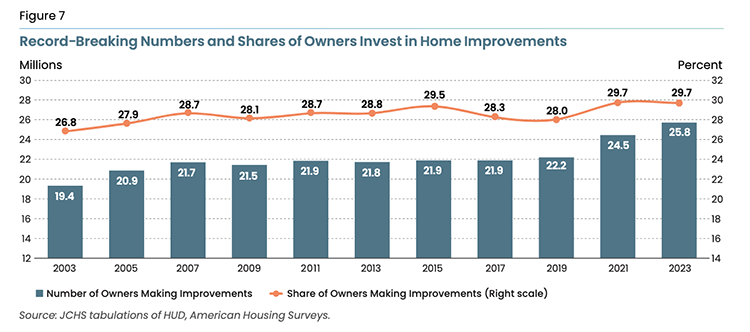Why Haven’t Loan Officers Been Told These
Facts? The Power of Storytelling: Case Studies
Loan officers today need specialized knowledge to broaden their range of mortgage solutions. Many transactions can become challenging or difficult primarily because loan officers may lack the necessary experience to confidently market and close these solutions. A prime example of this is financing for Accessory Dwelling Units (ADUs).
You don’t need 10 years of experience in financing ADUs to be considered an expert in this field. An expert is someone who recognizes their knowledge gaps and understands how to find the information necessary to complete the task at hand. Mortgage Loan Originators (MLOs) can enhance their businesses and become successful by mastering the management of implementation uncertainty.
A rainmaker is an individual who makes things happen by identifying needs and bringing together the necessary resources and stakeholders to create value. Rainmakers learn to leverage these resources, manage expectations, and develop buy-in for a shared vision. They must also be expert communicators, as articulating complex value propositions can be challenging. MLOs can benefit from adopting strategies from the IT industry to effectively communicate with and attract stakeholders.
Case studies showcase successful implementations or proposed projects. For instance, if we wanted to create a case study focused on ADUs, it would provide a solution or template that could easily be adapted for a specific market segment.
For example, Tom and Pat are considering downsizing. Their current family home has four bedrooms and is approximately 2,800 square feet. However, they are facing a challenge: even if they buy a lower valued home in their desired area, their new mortgage costs would increase by over $800 per month. And that is assuming they put down at least $300,000.
Tom and Pat decided to build a detached ADU on their current property instead. This choice offered several advantages. They constructed a 1,200 square foot ADU for $250,000, which they financed with a second mortgage at an interest rate of 7.75%, resulting in monthly principal and interest payments of $2,353. The combined payments for their two loans amount to $3,805. Tom and Pat leased the main house to a well-qualified government worker who will pay $3,900 per month.
The ADU solution offers Tom and Pat several advantages. Firstly, their net cash flow is better compared to financing a smaller, lesser-valued home at the current mortgage rates. Additionally, they have significantly increased the value and appeal of their existing home. The design and functionality of the new ADU far exceed any of the houses Tom and Pat had previously considered. In summary, purchasing another home to downsize would have represented a significant downgrade for them. Instead, they built the ADU of their dreams.
This case study illustrates success by tackling a common challenge. Storytelling is an ancient yet powerful communication technique. It presents a solution that enables consumers and stakeholders to visualize and understand the solution necessary to meet their needs.
In addition to a solution template, case studies are helpful for marketing and closing.
BEHIND THE SCENES: Mortgage Fraud Accelerating
IRVINE, Calif., June 23, 2025 — Cotality, a leading global property information, analytics, and data-enabled solutions provider, released its latest National Mortgage Application Fraud Risk Index for the first quarter of 2025, showing the index is at 133, down 0.3% from the end of 2024. The year-over-year trend is up 7.3% from Q1 2024, when the index stood at 124.
The largest year-over-year increase in Q1 2025 is in the transaction risk category at 4.6%. Transaction risk applies to applications where elements of a home purchase transaction were not fully represented to the lender. Hidden sales concessions, non-arm’s length sales, and rapid property flipping are examples.
“While mortgage delinquencies are currently low across the U.S., the market is ripe for an increase in fraud because of the continuing high interest rates, slow housing market, and other increasing costs of homeownership like insurance affordability,” said Matt Seguin, Sr. Principal, Fraud Solutions. “If market conditions continue to challenge sellers, risks like misrepresented down payments, inflated prices, and straw buyers could increase dramatically.”
Overall mortgage applications remained steady from Q4 2024. Purchase share remains high at 67% of transactions. As was the case last quarter, the share of government-backed loans increased again, from 24% to 26% of applications.
Cotality analyzed the indicators that predict elevated fraud activity. There were moderate increases from December to March for the following trends:
- Income: High income relative to time on the job and/or for the geographic area.
- Transaction: Alerts on purchase transactions with multiple high-risk elements are trending up, such as inconsistent property value relative to the borrower’s age or depreciating markets.
- Occupancy: Increased alerts that a primary or secondary home will not be occupied as disclosed.
- Property: Higher levels of alerts for values in the higher ranges of geographic areas and properties being resold within one year of a prior transaction.
The number of owner-occupied properties listed for rent within the last 180 days increased by 50%, the largest quarter-over-quarter increase; however, other indicators point to stabilized occupancy risk.
The next Cotality National Mortgage Application Fraud Risk Index will be released in August 2025, featuring data for the second quarter of 2025. For ongoing housing trends and data, visit the Cotality Insights blog.
Top 10 metro areas with the highest fraud risk
- Poughkeepsie-Newburgh-Middletown, NY
- New Haven-Milford, CT
- Miami-Fort Lauderdale-Pompano Beach, FL
- New Orleans-Metairie, LA
- Houston-The Woodlands-Sugar Land, TX
- Stockton, CA
- Albany-Schenectady-Troy, NY
- New York-Newark-Jersey City, NY-NJ-PA
- Los Angeles-Long Beach-Anaheim, CA
- Cape Coral-Fort Myers, FL
METHODOLOGY
The Cotality National Mortgage Application Fraud Risk Index analyzes the collective level of loan application fraud risk the mortgage industry is experiencing each quarter. CoreLogic develops the index based on residential mortgage loan applications processed by Cotality LoanSafe Fraud Manager™, a predictive scoring technology. The report includes detailed data for six fraud type indicators that complement the national index: identity, income, occupancy, property, transaction, and undisclosed real estate debt.
About Cotality
Cotality accelerates data, insights, and workflows across the property ecosystem to enable industry professionals to surpass their ambitions and impact society. With billions of data signals across the life cycle of a property, we unearth hidden risks and transformative opportunities for agents, lenders, insurers, governments, and innovators.

Tip of the Week – Sign Up for 2025 CE
Expanding your product offerings is an effective way to enhance your business’s vitality. This year, the Loan Officer School is surveying non-government financing options for construction and renovation projects.
The shortage of affordable housing is unlikely to be resolved anytime soon. As affordable, move-in-ready housing solutions remain hard to find, the demand for construction and renovation loans is expected to increase. According to the JCHS, Harvard University, the US remodeling market soared above $600 billion in the wake of the pandemic and, despite recent softening, remains 50 percent above pre-pandemic levels.
Discover how to enhance borrower advantages through construction and renovation financing.
- Enhanced housing affordability.
- Housing options for aging or disabled borrowers.
- Housing solutions for borrowers caring for aging or disabled family members.
- Multi-generational housing solutions.
For any questions or inquiries regarding state education needs, please feel free to call.
Call Us Today! (866) 314-7586
Sign up for a 2025 CE Webinar
Online self-study classes are available.

